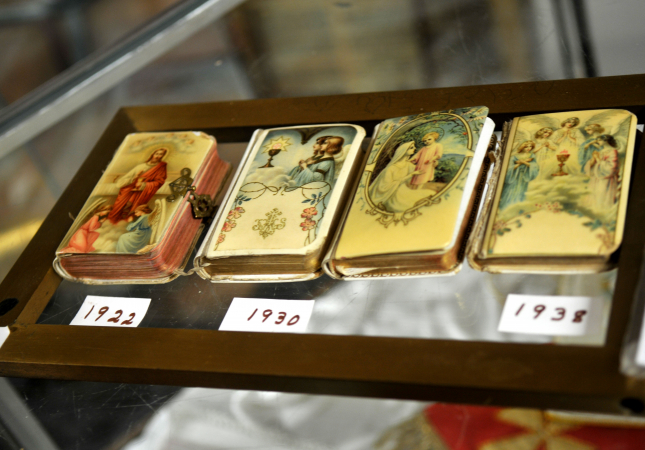
1994
A church tour was organized by Tassie Pochopien, consisting of six historical churches of various denominations. The idea was well received so it was decided to repeat the tour the following year with different churches. At that time the Castle Museum (Saginaw County historical Society) approached the tour committee and suggested that all the churches bring artifacts to the museum and include the Castle Museum as part of the tour. It was a great idea and the people attending showed interest in the church artifacts. During this time Tassie discovered that our Catholic churches had many vestments and church artifacts that were not used, but were stored in basements and attics. Thus was due to changes in our churches after Vatican II. Tassie thought, "why not have a Catholic Church Museum and preserve these sacred items?"
1997
Tassie sent out letters to 109 churches in the Diocese regarding the plan for a Catholic Museum and explaining that this would be a Millennium project. There was a great response and churches called saying they had many artifacts. They it became a matter of getting display cases. So with the financial help of the Knights of Columbus #4232 we were able to acquire display cases.
1998
Fr. O'Connor of St. Stephen's Church (Saginaw, Mich.) gave permission to display the artifacts we had temporarily. After eight months the museum was moved to St. Mary's Cathedral it was there for six months then everything was put in storage at the Knights of Columbus Council #4265 basement.
1999
We then found a home at Holy spirit Church, again temporarily for a year. Again we were faced with the problem of a location. Things were packed up and stored in a warehouse and some stored at St. Casimir's Church.
2001
On February 27, 2001 we received tax exemption under Section 501(a), an initial Constitution and bylaws. Our organization was finally completed.
2006
On June 23, 2006, Bishop Carlson gave us a permanent home at the Diocesan Office in the lower level at 5800 Weiss St., Saginaw, Michigan 48603. Bishop Robert J. Carlson blessed the Museum and its new location.
The purpose of the Museum is "Preservation of Church artifacts, presenting historical church information and to encourage ecumenism for dialogue and discussion between faiths."
The Historical Time Line creatively provides information about the development of major religious turning points affecting all humanity. (The Historical Time Line is a series of display panels located in the museum room that collectively provide an outline of historical events from before Christ to the present).
This organization hopes to provide future generations the opportunity appreciate the artistry and craftsmanship of the artifacts.